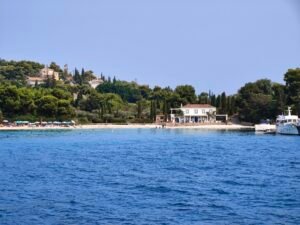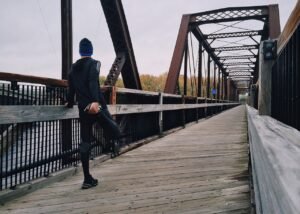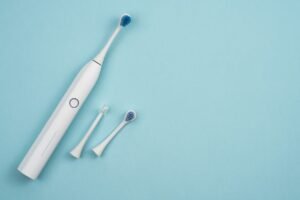Top Salzburg Attractions – Best Things to do in Salzburg
Salzburg unfolds as more than just the City of Mozart and the distinguished host of the Salzburg Festival. Beyond its historical charm, the city boasts a myriad of tourist attractions that offer profound insights and delightful surprises at every turn. Prominent landmarks like Hohensalzburg Fortress, Mozart museums, Getreidegasse, and Hellbrunn Palace headline Salzburg’s captivating tapestry. A visit to the Top 10 attractions provides an ideal overview of this UNESCO World Heritage-listed city.
Hohensalzburg Fortress: A Majestic Citadel
Perched on the Festungsberg, overlooking the Baroque historical district, Hohensalzburg Fortress stands as Central Europe’s largest fully preserved castle. Erected in 1077 by Archbishop Gebhard, the fortress underwent architectural evolution under his successors, attaining its present appearance in 1500 under Archbishop Leonhard von Keutschach. Originally built for defensive purposes, the fortress has never succumbed to foreign troops, solidifying its historical significance.
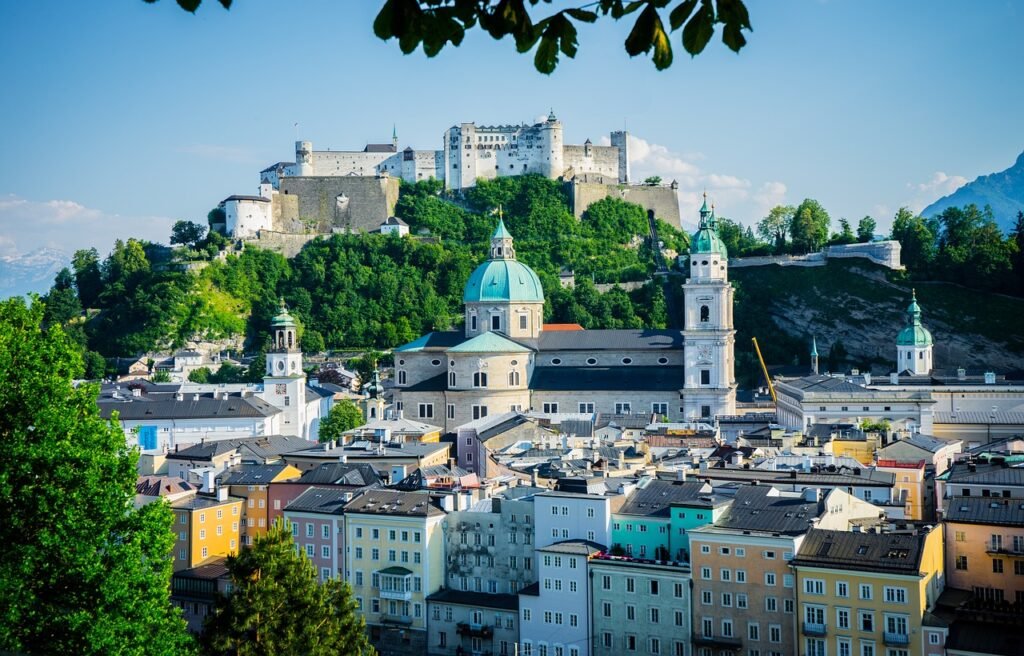
Museums within the Fortress: A Journey Through Time
Hohensalzburg Fortress hosts a plethora of museums, each offering a unique glimpse into Salzburg’s past. The Fortress Museum showcases exhibits spotlighting courtly life under the prince archbishops, while the Marionette Museum and the Museum of the Rainer Regiment invite visitors on a captivating historical journey. The historic armory features an interactive display on suits of armor and weapons, and the Princes’ Chambers on the third floor, including the Golden Hall, provide an unchanged glimpse into the 15th century.
Panorama Tour: A Visual Feast
The Panorama Tour offers a distinctive experience, guiding visitors from the salt magazine through the dungeon to the Reckturm tower’s viewing platform. This vantage point provides a breathtaking 360-degree view of the city. The tour continues through the battlements to the renowned Salzburg Bull, adding to the immersive exploration of the fortress.
Fortress Visiting Details
Accessible year-round, Hohensalzburg Fortress can be reached not only on foot since 1892 but also through the Fortress Funicular in Festungsgasse. The fortress hosts the renowned Salzburger Festungskonzerte (Fortress Concerts) and features a weekly brass player performance from the trumpet tower every Sunday at 11:45 am.
Operating Hours and Ticket Information
- January-April*: 9:30 am-5 pm
- May-September: 8:30 am-8 pm
- October-December*: 9:30 am-5 pm
- *Easter and Advent weekends: 9:30 am-6 pm
- 24 Dec: 9:30 am-2 pm (last admission 30 minutes before closing)
Various ticket options cater to different preferences, including basic tickets, footpath tickets, all-inclusive tickets, and panorama tickets. Prices vary for adults, children, groups, and individuals with disabilities. Dogs are permitted outdoors only.
In addition to its historical significance, Hohensalzburg Fortress serves as a vibrant cultural venue, hosting events and concerts that enrich the visitor experience. A visit to this iconic fortress promises a harmonious blend of history, culture, and panoramic views, making it an indispensable stop for anyone exploring the captivating city of Salzburg.
DomQuartier Salzburg: A Cultural Gem in the Heart of the City
Nestled in the heart of Salzburg City, the DomQuartier stands as a unique cultural highlight, seamlessly blending history and artistry. The architectural ensemble comprises the Cathedral, the Residenz – the former epicenter of prince-archbishops’ influence – and St. Peter’s Abbey. With a single admission ticket, visitors gain access to four distinct Salzburg museums, each offering a captivating journey through the city’s Baroque history.
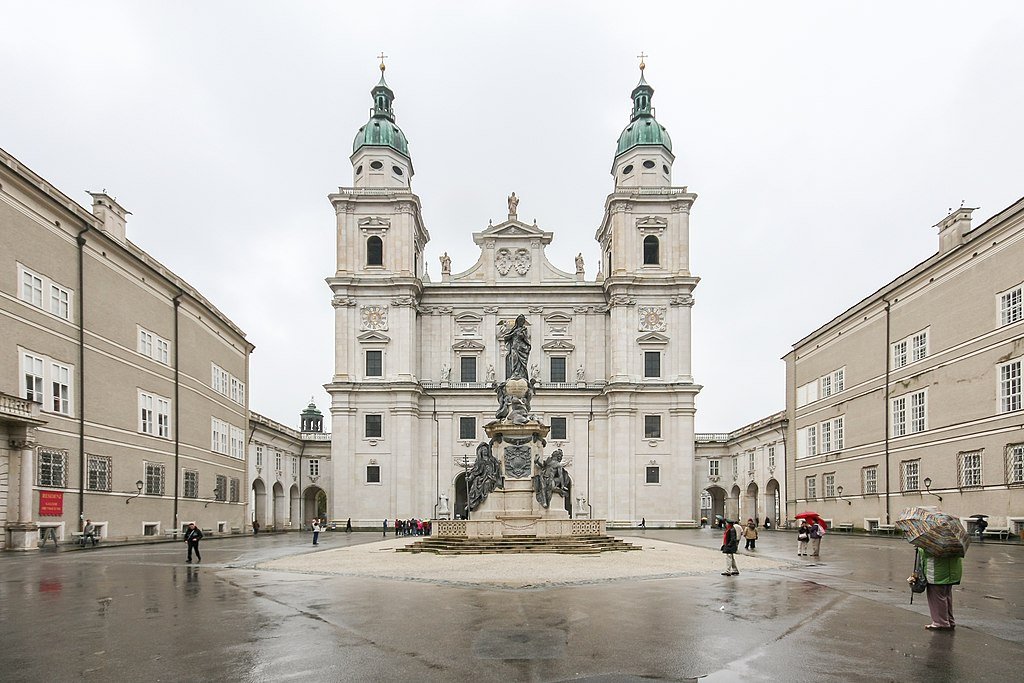
A Multi-Museum Experience
Embarking on a walking tour of the DomQuartier begins in the resplendent State Rooms of the Residenz. Here, the “Residenzgalerie” on the upper floor showcases extraordinary artworks by European painters spanning the 16th to 19th centuries. The terrace above the Cathedral Arches provides a scenic panorama of Salzburg’s historic district and the surrounding city mountains.
Continuing the tour, visitors explore the Cathedral’s Northern Oratory, adorned with intricate stuccowork, hosting special exhibitions. The organ loft offers a spectacular view of the cathedral’s grand interior, while the Southern Oratory houses the Cathedral Museum, displaying artworks from the Gothic to Baroque eras.
The journey unfolds through the Cabinet of Curiosities and the Long Gallery, culminating at St. Peter’s Museum, a repository of sacred treasures and artistic masterpieces from St. Peter’s Archabbey.
Guidobald Graf von Thun: Architectural Visionary
Prince-archbishop Wolf Dietrich laid the foundation for Salzburg’s Baroque historical district, but the visionary prince-archbishop Guidobald Graf von Thun, during his rule from 1654 to 1668, significantly contributed to the creation of today’s DomQuartier. His projects, including the cathedral arches, Residenz- and Cathedral Squares, and the “Long Gallery,” set the stage for this immersive museum experience.
DomQuartier Highlights in Detail
- State Rooms of the Residenz: Former center of prince-archbishops’ secular power
- Residenzgalerie: Internationally acclaimed exhibition of European painting
- Terrace above the cathedral arches: Panoramic views of Salzburg’s Baroque city center
- North Oratory: Space for special exhibitions
- Cathedral Organ Loft: Unique perspective of Salzburg’s spiritual heart
- Cathedral Museum: Church treasures from the cathedral and other churches in the archdiocese of Salzburg
- Chamber of Art and Wonders: Exhibits and curiosities from art and nature
- Long Gallery: Former painting gallery of the prince-archbishops
- St. Peter’s Museum: Treasures from the Archabbey of St. Peter, the oldest monastery in the German-speaking world
Operating Times and Admission Prices
- Wednesday-Monday: 10 am-5 pm
- July and August: Daily 10 am-6 pm
- December-6 January: Daily 10 am-5 pm (last admission one hour before closing)
- Closed: 24 Dec.
Guided tours with audioguides are available in 10 languages, and a children’s audio guide in German, English, and Italian. Dogs are not permitted, except for guide dogs.
Admission Prices:
- Adults: €13.00 / €10.00*
- Children (up to 6 years): Free
- Pupils, students (up to 25 years) (with ID): €5.00 / €4.00*
- People with disabilities from 50% (disability pass required): Free, one accompanying person free (if noted in the disability pass)
- Families: €27.00 / €22.00*
- Youths (up to 25 years): €8.00 / €6.00*
- Seniors (from 60 years), religious and priests, groups: €10.00 / €8.00*
- Pupils free in class groups
- *If certain parts of the tour are closed to visitors
SalzburgCard holders enjoy one-time free admission. The DomQuartier invites visitors to delve into the rich tapestry of Salzburg’s history and artistic heritage, offering a comprehensive exploration of the city’s cultural evolution.
Natural History and Technology Museum: A Fascinating Journey into Science
Explore the wonders of nature and technology at the Haus der Natur, a captivating museum covering 7,000 square meters of exhibition space. From the awe-inspiring world of dinosaurs to the mysteries of underwater realms, lunar landscapes, and the intricacies of the human body, the museum offers a diverse array of exhibits that promise excitement and discovery.
Visitor’s Guide
The Haus der Natur spans eight levels across two buildings, with the main structure housing classic natural history displays and the zoological department. Ascend the glass staircase to the Science Center, where the focus shifts to research and hands-on experiments. A visit to the museum is recommended to take approximately three hours.
Aquarium and Reptile Zoo
Dive into vibrant underwater worlds at the aquarium, featuring 38 impressive display tanks showcasing a variety of captivating creatures from tropical coral reefs, oceans, and local rivers. Meanwhile, the reptile zoo introduces visitors to a diverse array of live snakes and lizards.
Note: The reptile zoo is undergoing a complete redesign and is expected to reopen in spring 2024.
Science Center: A Tangible Exploration of Technology
Immerse yourself in the world of physics and technology at the Science Center, where interactive exhibits allow visitors to experience scientific principles firsthand. Generate electricity with turbines, simulate space travel on a hydraulic platform, or construct and test a bridge – the Science Center is a space for 100% interactive exploration.
Diverse Exhibitions
The Haus der Natur serves as Salzburg’s natural history museum, covering a broad spectrum of environmental topics. The exhibitions include:
- Evolution, man & diversity
- Ice Age and climate
- Our universe
- Prehistoric times and dinosaurs
- Journey into the human body
- The animal kingdom on Earth
- World of oceans
- The Salzach lifeline
- The earth through the ages
- Crystal treasures
- Christian Doppler
- Habitats in the diorama
- Man and animal in fables and myths
- Tibet and the history of the museum
Operating Hours and Admission
- Daily: 9 am-5 pm
- 24 December: 9 am-4 pm
- Closed: 25 December (last admission 30 minutes before closing)
Guided tours are available by prior arrangement (by telephone) at least two weeks before. Dogs are not permitted, except for guide dogs.
Admission Prices (2024)
- Adults: €12.00
- Children (4-15 years): €8.50
- People with disabilities (disability pass required): Adults €9.00; Children €5.00 – Accompanying person free if indicated on the disability pass
- Pupils, apprentices, students up to 27 years (ID required): €10.00
- Senior citizens from 60 years on (ID required): €11.00
- Families (1 adult + 1 child): €17.50, (2 adults + 1 child): €28.00 – Every additional child: €7.00
- Groups of 10 adults or more, per person: €11.00
- School groups: €5.00
- SalzburgCard holders enjoy one-time free admission.
Museum of Modern Art Salzburg Mönchsberg: Elevating Artistic Expression
Perched high above the enchanting old town of Salzburg on the Mönchsberg, one of the Museum der Moderne Salzburg locations offers a distinctive cultural experience. Across four levels, this museum showcases international art treasures from the 20th and 21st centuries within a stylish and contemporary setting.
Contemporary Art in a Striking Locale
In recent years, the Museum der Moderne has redefined artistic standards, presenting a curated selection of modern and contemporary masterpieces spanning 2300 square meters. The exhibitions feature internationally acclaimed artworks alongside pieces from the museum’s own collections, captivating visitors through a rotation of displays. The unique, minimalist exhibition space consistently captivates a global audience.
Distinctive Architecture
Designed by the Munich architecture team Friedrich Hoff Zwink, the Museum der Moderne officially opened its doors in 2004. Noteworthy architectural elements include glassed-in staircases with views of the 19th-century water tower and an exterior adorned with local marble from the Untersberg.
Multimedia Guide
Enhancing the visitor experience, the museum offers a multimedia guide through the MuseumStars app (available on iOS and Android). This innovative guide provides a wealth of information and services, including an introduction to art in public spaces, digital art walks, site plans, orientation aids, and the Salzburg Magazine.
Operating Hours and Admission
- Tuesday-Sunday: 10 am-6 pm, Wednesday: 10 am-8 pm
- During the Summer Festival and 26.12.2023-6.1.2024: Monday 10 am-6 pm
- 24 Dec: 10 am-2 pm
- Closed: 25 December
Dogs are not permitted, except for guide dogs.
Admission Prices
One Museum – Two Buildings – Five Exhibitions
The Museum Ticket covers both the Museum der Moderne Salzburg/Mönchsberg and Altstadt (Rupertinum), including the MönchsbergAufzug Lift and panoramic view. The ticket is valid for 14 days for a single entry.
- Adults (regular): €13.00 / €15.00*
- Reduced (seniors from 65 years, students up to 26 years, cooperation partners): €10.00 / €12.00*
- Children (up to 6 years): Free admission
- Children / youths (6-14 years): €8.00 / €8.80*
- Youths (15-19 years): €8.00 / €10.00*
- People with disabilities (presentation of a disability ID): Free admission
- 2 Adults + 2 children (up to 14 years): €26.00 / €30.00*, each additional child: €4.00 / €6.00*
- 1 Adult + 1 child (up to 14 years): €18.00 / €21.00*, each additional child: €4.00 / €6.00*
- Military and Civilian Service: €8.00 / €10.00*
- Groups of 10 adults or more, per person: €10.00 / €12.00*
- SalzburgCard holders enjoy one-time free admission.
Guided Tours:
- Public curator-guided tour: Every Wednesday 6 pm-7 pm (entrance fee + €3.00), Mönchsberg
- Public guided tour of the current exhibitions: Every Sunday & public holiday, 3 pm-4 pm (entrance fee + €3.00), Mönchsberg
- Guided tours for groups (English) up to 30 persons on request: €90.00 / 60 min
Salzburg Cathedral: A Majestic Marvel of Sacred History
Among the myriad churches in Salzburg, the cathedral stands as the city’s paramount sacred edifice. Its imposing dome and twin towers create a distinctive and awe-inspiring silhouette against the city skyline, revealing a multitude of surprising and captivating details upon closer inspection.
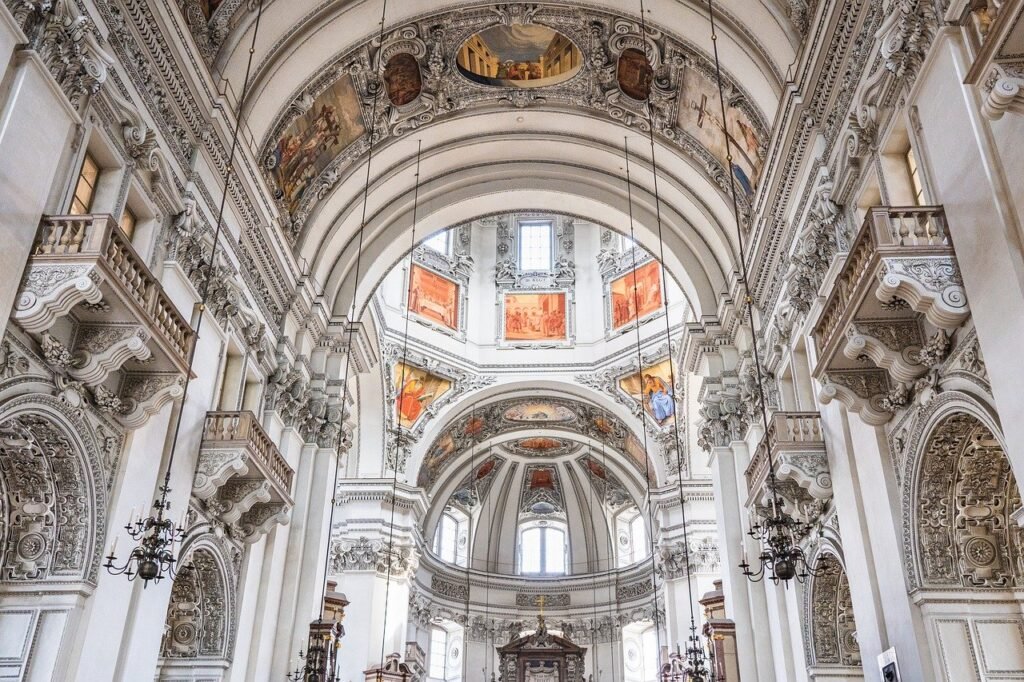
Enduring Impressions
As the centerpiece of Salzburg, the cathedral offers a wealth of discoveries, including the baptismal font, crypt, “Vanitas” art installation, and a chest containing relics of Saints Rupert and Virgil. Secrets abound, from the seven bells to the three entrance doors, with even 370-year-old graffiti etched into the marble portal.
Preserving History
Recognizing the cathedral as a protected monument, a conservation fee of EUR 5.00 is levied for entry (children and adolescents up to 18 years are exempt). This fee grants access to an array of cathedral experiences, including audio guides and daily tours that unveil new perspectives. Additionally, “Musik zu Mittag” (music at lunchtime) allows visitors to enjoy the melodies of organs once played by Mozart.
Magnificent Cathedral Architecture
Salzburg Cathedral stands as a grand testament to Early Baroque design, with a resplendent facade crafted from Untersberg Marble. Four monumental statues grace the facade, representing Apostles Peter and Paul, along with Salzburg’s patron saints, Rupert and Virgil. The Cathedral Square, featuring a statue of the Virgin Mary, serves as the backdrop for Salzburg Festival performances and the cherished Christmas Market.
Treasures Within Salzburg Cathedral
The cathedral houses a myriad of treasures, including a bronze baptismal font (1311), the impressive main organ, cathedral gates by Schneider-Manzell, Mataré, and Manzú, and seven bells. Noteworthy are the three gates symbolizing Faith, Love, and Hope, and the seven bells, each named from Salvator (the largest) to Barbara (the smallest). The Cathedral Museum showcases additional art treasures spanning 1300 years of church history.
Salzburg Cathedral and Its Rulers
The cathedral’s history intertwines with that of its rulers, the prince-archbishops. Multiple fires and subsequent rebuilding efforts mark its tumultuous past, commemorated by the wrought-iron gates displaying the years 774, 1628, and 1959, signifying each consecration.
Medieval Legacy
Originally built in 767 under Bishop Virgil, the cathedral has undergone various iterations. The Romanesque minster, constructed after a fire in 1167, stands as the mightiest north of the Alps. Remnants of these early churches can still be explored in the cathedral crypt.
Early Baroque Splendor
Devastated by fire in 1598, the cathedral was rebuilt under Archbishop Markus Sittikus and architect Santino Solari, showcasing Early Baroque sacred architecture. Despite damage during World War II, the cathedral was re-consecrated in 1959, preserving its magnificence.
The cathedral accommodates approximately 900 worshippers.
Opening Times
Cathedral:
- January-February: Mon-Sat 8 am-5 pm, Sun & public holiday 1 pm-5 pm
- March-July: Mon-Sat 8 am-6 pm, Sun & public holiday 1 pm-6 pm
- August: Mon-Sat 8 am-7 pm, Sun & public holiday 1 pm-7 pm
- Festival season: modified hours on days of “Jedermann” rehearsal/performance in dry weather!
- September-October: Mon-Sat 8 am-6 pm, Sun & public holiday 1 pm-6 pm
- November: Mon-Sat 8 am-5 pm, Sun & public holiday 1 pm-5 pm
- December: Mon-Sat 8 am-6 pm, Sun & public holiday 1 pm-6 pm
No visits during mass and Music at lunchtime. Modified closing times in July and August due to “Jedermann” rehearsals and performances.
Special Opening Hours
Cathedral Crypt:
- Mon-Sat 10 am-5 pm, Sun & church holiday 1 pm-5 pm
Guided Tours:
- “Salzburg Cathedral – Daily Guided Tour”: Daily at 2 pm, in German (Duration: approx. 40 minutes, max. 25 persons)
- Themed tours: All year round, by appointment
- Music at lunchtime: Daily (except Sundays and public holidays), noon-12:30 pm
Prices
- Conservation fee adults: €5.00
- Children and youths up to 18 years: Free
- Audio guide (also for children): €3.00 (plus conservation fee)
- SalzburgCard: reduced conservation fee €3.50
Guided Tours of the Cathedral:
- Adults: €9.00
- Children up to 18 years: Free
Individual Tours:
- Cost per tour (45 minutes): Min. €100.00 (1-8 participants) or €12.00 per person (9 or more participants)
Tickets available at the ticket offices in the cathedral vestibule and via the webshop.
Music at Lunchtime:
- Adults: €9.00
- Children up to 18 years: Free
Tickets available at the ticket offices in the cathedral vestibule and via the webshop.
Salzburg Zoo Hellbrunn: A Wildlife Oasis in Southern Salzburg
From the majestic African lion to the indigenous ibex, Salzburg Zoo, boasting a rich variety of species, captivates visitors of all ages. Nestled in the picturesque south of Salzburg, it stands as an ideal family destination, offering an enriching experience for nature enthusiasts.
Global Animal Diversity in Hellbrunn
Home to approximately 1,500 animals across 150 species, Salzburg Zoo is a microcosm of wildlife. From the diminutive pygmy mouse to the colossal white rhinoceros, creatures from every corner of the globe find a haven here. Noteworthy attractions include the expansive African section with its savannah enclosure and lion house, the Eurasian area inhabited by red pandas, Alpine ibexes, and brown bears, the American fauna featuring sloths and South American tapirs, and the Australian zone hosting parma wallabies.
Distinctive Zoo Landscape at Hellbrunn
Spanning 14 hectares, the zoo prioritizes spacious outdoor habitats, aiming to replicate the natural environment of its inhabitants. Utilizing Hellbrunn’s terrain, including steep rock faces and hilly meadows, the enclosures are designed to mirror the specific needs of each species.
Intimate Animal Encounters
Welcoming around 400,000 visitors annually, Salzburg Zoo facilitates close encounters with its residents. Visitors can embark on a zoo safari, partake in a “rendezvous with your favorite animal,” or enjoy evening tours during the summer. With a mix of native and exotic wildlife, the zoo often showcases adorable baby animals. The Ark petting zoo, housing affectionate pets, provides a delightful experience for cuddle enthusiasts.
Historic Roots in a Castle Park
Dating back to the 15th century, the area housing today’s zoo served as an archiepiscopal game park. Archbishop Markus Sittikus conceptualized the Hellbrunn complex in 1612, including the palace, trick fountains, and zoo, completing it in 1619. Today, Salzburg Zoo stands as a modern center for nature and species conservation, captivating children and adults alike.
Opening Times
- January, February: 9 am-4:30 pm (last admission 4 pm)
- March: 9 am-5:30 pm*
- April-June: 9 am-6 pm*
- July, August: 9 am-6:30 pm*
- September: 9 am-6 pm*
- October: 9 am-5:30 pm*
- November, December: 9 am-4:30 pm (last admission 4 pm) *last admission one hour before closing
Dogs permitted on a short leash.
Prices (2024)
- Adults: €15.00
- Children (4-14 years): €6.00
- Youths (15-19 years): €9.50
- People with disabilities (disability pass required): €10.00
- One accompanying person free of charge for blind persons, wheelchair users, and 100% handicapped persons with a “B” in their disability pass; otherwise €11.00
- Senior citizens (from 65 years on, ID-card): €13.50
- Families (2 adults, 1 child): €34.00 – every additional child: €5.50
- Groups of 15 adults, per person: €13.50
- Groups of 15 children (4-14 years), per person: €5.50
- Groups of 15 youths (15-19 years), per person: €8.50
- Dogs: €3.00 (guide dogs free of charge)
- SalzburgCard: one-time free admission!
Mirabell Palace and Gardens: A Timeless Haven of Beauty
Constructed in 1606 by Prince-Archbishop Wolf Dietrich for his beloved Salome Alt, Mirabell Palace stands as an enchanting symbol of romance and hosts some of the most romantic weddings imaginable.
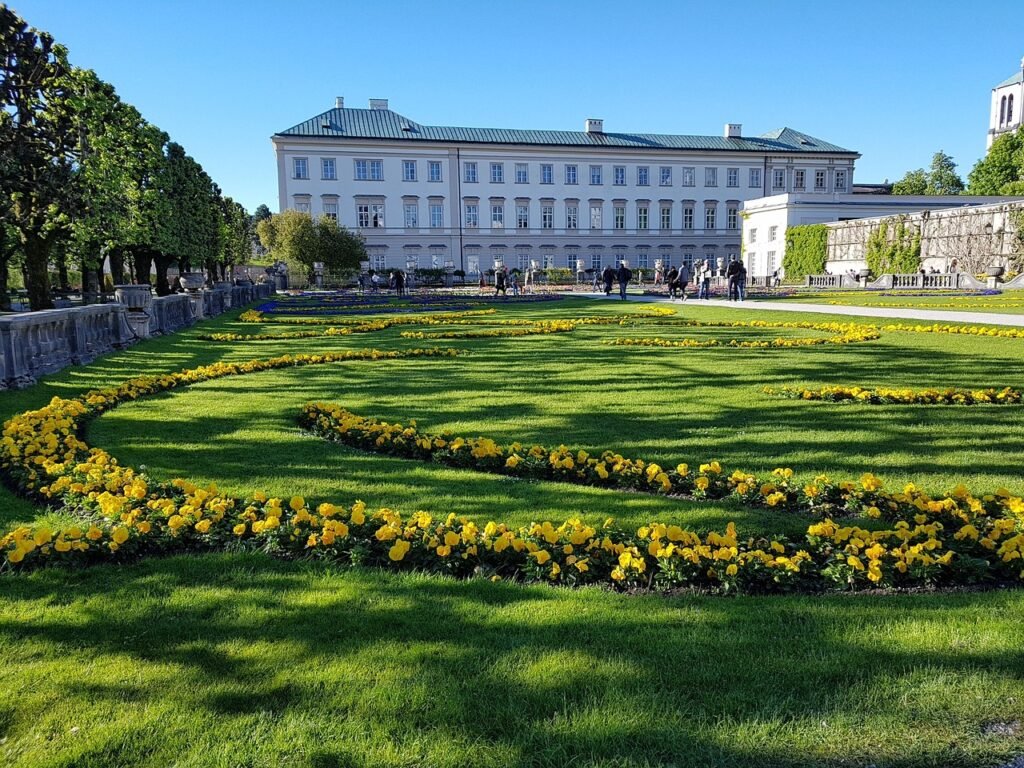
Exploring Mirabell Palace
Derived from Italian, the name “Mirabell” combines “mirabile” meaning “admirable” and “bella” meaning “beautiful.” The Marble Hall, once a banquet hall for prince-archbishops, is renowned as one of the “most beautiful wedding halls in the world.” Historically, musical luminaries like Leopold Mozart and his children, Wolfgang and Nannerl, graced this space. Today, it welcomes weddings, conferences, awards ceremonies, and the harmonious SchlossKonzerteMirabell concerts. Adorned with numerous cherubs, the “Angel Staircase” ascends to the Marble Hall.
Mirabell Palace boasts a rich history and currently houses municipal offices, including those of Salzburg’s mayor.
Mirabell Gardens – Baroque Splendor in the Heart of the City
Under Archbishop Johann Ernst von Thun’s vision in 1690, the Mirabell Gardens underwent a Baroque transformation. Retaining the typical Baroque geometrical form, the gardens offer a visual connection to the cathedral and fortress, harmoniously integrating with the city’s historical ensemble.
Notable features include:
- The Pegasus Fountain by Kaspar Gras (1913)
- Four elemental groups around the Grand Fountain by Ottavio Mosto (1690)
- Palace Chapel, consecrated to St. Johannes Nepomuk in 1726
- The Hedge Theater, one of the oldest north of the Alps, hosts cultural events in the summer
- The Dwarf Garden, originating from Archbishop Franz Anton Fürst Harrach, featuring marble dwarves (closed in winter)
- The Rose Garden with ornamental rose beds south of Schloss Mirabell
- The Orangery, serving as a palm house today
Mirabell Gardens – A Cinematic Icon
Mirabell Gardens gained cinematic fame as a pivotal location in the Hollywood musical “The Sound of Music.” The iconic scene featuring Maria and the children dancing around the Pegasus Fountain remains etched in cinematic history.
Opening Times
- Mirabell Palace and Angel Staircase: Monday-Saturday approx. 8 am-6 pm (closed on Sundays & holidays)
- Marble Hall: Monday, Wednesday, Thursday 8 am-4 pm, Tuesday and Friday 1 pm-4 pm (closed during special occasions)
- Mirabell Gardens: daily from approx. 6 am to dusk, with partial closures in winter
- Hedge Theater: closed during winter months (expected to be closed until spring 2024 for reconstruction)
- Orangery: open all year round, daily 9 am-4 pm
- Dwarf Garden: closed during winter months
Prices
- free.
Mirabell Palace and Gardens offer barrier-free access, with an induction loop available in the Marble Hall and the Pegasus Room for the hearing-impaired.
Mozart’s Birthplace: A Symphony of History
In the heart of Salzburg, at No. 9 Getreidegasse, stands the “Hagenauer Haus,” where the prodigious Wolfgang Amadeus Mozart took his first breath in 1756. Now known as Mozart’s Birthplace, this historic abode has transformed into one of Austria’s most visited museums, captivating Mozart enthusiasts and history aficionados alike.
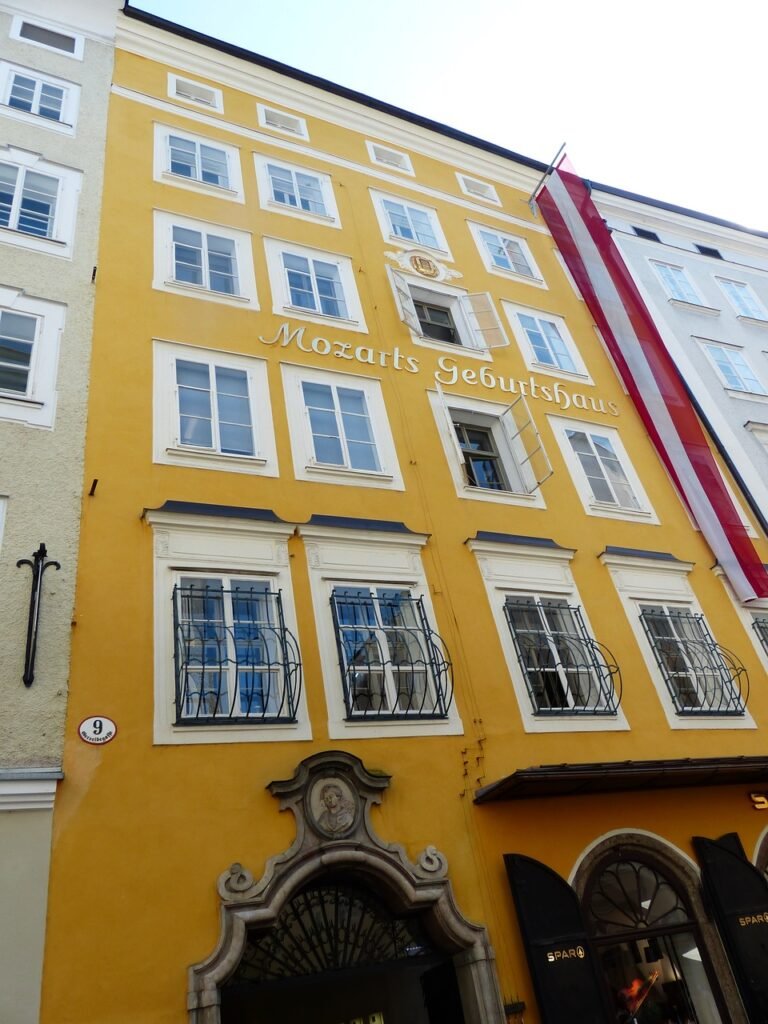
Distinguished Residents: The Mozarts at No. 9
The spotlight falls undeniably on No. 9 Getreidegasse, where the Mozart family resided for 26 years, from 1747. Wolfgang, along with parents Leopold and Anna Maria, and sister “Nannerl,” spent his formative years in this residence until 1773 when the family relocated to the “Mozart Residence” on Makartplatz Square.
Museum and Sacred Ground
Mozart’s Birthplace serves as both a museum and a sacred pilgrimage site. Established by the International Mozarteum Foundation in 1880, the museum has evolved over the years, offering an essential experience for every visitor to Salzburg.
Journey Through Mozart’s Times
Embark on a one-hour tour through meticulously preserved original rooms and step into a faithfully reconstructed middle-class apartment from the 18th century. Immerse yourself in Mozart’s era, surrounded by everyday items and period furniture.
Unique Exhibition Pieces
The museum houses original certificates, letters, and personal memorabilia, unveiling facets of Mozart’s life in Salzburg. Portraits from his lifetime allow an intimate encounter with the musical genius, while historical instruments, including Mozart’s violin and clavichord, bring his artistry to life.
The Many Faces of Mozart
Delve into the multifaceted life of this wunderkind, exploring his childhood, extensive travels, and enigmatic death. The first floor features a rotating annual exhibition, ensuring a fresh perspective even for the most ardent Mozart admirers.
Opening Times
- Daily: 9 am-5:30 pm
- 24 Dec: 9 am-1 pm
- 1 Jan: noon-5:30 pm (Last admission 30 minutes before closing)
*Note: Periodic closures during Mozart Week for concerts. Check here for current information.
Prices (2024)
- Adults: €13.50
- Children (6-14 years): €4.00
- Youths (15-18 years): €4.50
- People with disabilities: Free entry (accompanying person free if indicated on disability pass; otherwise, €10.50)
- Families (2 adults + children under 18): €25.00
- Groups of 10 adults or more, students (up to 27 years), senior citizens: €10.50 per person
- School groups (6-18 years): €3.00 per person
- SalzburgCard: One-time free admission
Combined Ticket: Residence and Birthplace
- Adults: €20.00
- Children (6-14 years): €5.50
- Youths (15-18 years): €6.50
- People with disabilities: Free entry (accompanying person free if indicated on disability pass; otherwise, €16.00)
- Families (2 adults + children under 18): €39.00
- Groups of 10 adults or more, students (up to 27 years), senior citizens: €16.00 per person
- School groups (6-18 years): €4.50 per person
- SalzburgCard: One-time free admission
Getreidegasse: Where History Meets Fashion
Nestled in the heart of Salzburg’s Old Town, the Getreidegasse beckons visitors with its enchanting allure and cultural treasures, notably Mozart’s Birthplace. This lively street, adorned with a mix of international fashion boutiques, traditional inns, and storied establishments, is an irresistible draw for a diverse array of global tourists.
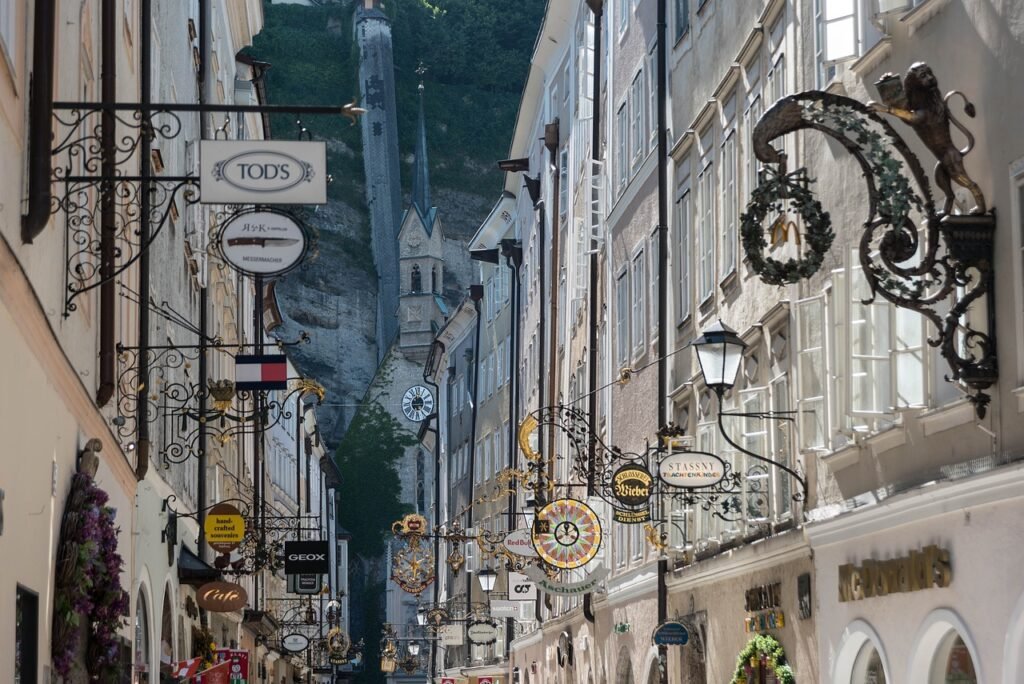
Architectural Elegance
The architecture along the Getreidegasse showcases exquisite doorways and windows that gracefully diminish in size as they ascend from the ground floor. These historic structures often bear inscriptions of significant dates, former owners’ names, and even the symbolic eye of God. Adding to the street’s allure is Mozart’s Birthplace at No. 9, where the musical prodigy came into the world in 1756.
Through-Houses: Portals to Art and History
Distinctive to Salzburg’s historical district, through-houses seamlessly connect two different streets through arcaded passageways. Today, these structures house art galleries, shops, and even poignant artworks, like the Madonna with the infant Jesus in the Schatz House at No. 3 Getreidegasse.
A Tapestry of Exploration: Strolls and Shopping
The Getreidegasse invites leisurely strolls and delightful shopping expeditions. Its eclectic offerings include international fashion chains, traditional stores, and a myriad of dining options. Visitors can explore jewelry shops, folkwear boutiques, accessory stores, antique dealers, leather goods emporiums, stationery outlets, and perfumeries. An intriguing aspect of the street is the ornate guild signs that adorn building facades, a highlight often overlooked high above the heads of pedestrians. The Wieber shop in Getreidegasse, a traditional metalworking business, handcrafts these intricate “advertising signs.”
Decoding the Name
While “Getreide” translates to “grain” in German, the street’s name has no direct association with this cereal. Originally named Trabe-, Trab-, or Trav-Gasse, reflecting older forms of the verb “traben” meaning to trot or lope along, the street evolved over the years. The names Tragasse, Traidgasse, and Getreidgasse gradually transformed into the familiar Getreidegasse we know today, embodying a captivating blend of history and modernity.

